Román Oyarzun Oyarzun
Román Oyarzun Oyarzun (1882-1968) was a Spanish political activist, publisher, diplomat, entrepreneur and historian. He is best known as author of Historia del Carlismo (1939), for half a century a key reference work on history of Carlism and today considered the classic lecture of Traditionalist historiography. He is also acknowledged as member of the Spanish consular service, briefly editor of a daily El Correo de Guipúzcoa and a Carlist militant himself.
Román Oyarzun Oyarzun | |
|---|---|
 | |
| Born | Román Oyarzun Oyarzun 1882[1] Olagüe, Spain |
| Died | 1968 Pamplona, Spain |
| Nationality | Spanish |
| Occupation | lawyer, entrepreneur, publisher, public servant |
| Known for | historian |
| Political party | Carlism |
Family and youth
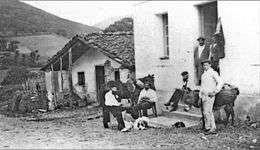
The Oyarzun family originated from Valle de Atez, an area in Prepirineos of Northern Navarre. Ethnically Basque [2] Román's ancestors formed part of the agricultural working class, holding plots around the hamlet of Olagüe. His father, Juan Miguel Oyarzun Seminario (1856-1908),[3] ran a petty rural merchant business; though in the 1890s struggling when transporting goods on his mules across the hostile terrain,[4] in the early 20th century he was already operating a few shops.[5] He married a local girl, Patricia Oyarzun; nothing is known either about her family or about a possible kinship between the two. The couple settled in Olagüe; it is not clear how many children they had, apart from Román the other two known are Martina and Victoriano.[6] It seems that they were brought up in a fervently Catholic, militant ambience, perhaps flavored by Integrism; in the early 1890s the parents and children alike are recorded as signing up various letters, e.g. protesting reported mistreatment of the Pope, and printed later in an Integrist newspaper El Siglo Futuro.[7]
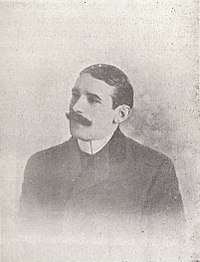
None of the sources consulted offers any information on early education of Román. Already during his childhood he developed a knack for letters; in 1893 he sent a contribution to the Pamplonese daily El Pensamiento Navarro. Signed "U.E.",[8] it was published and the author was invited to contribute more before his identity was finally revealed.[9] In 1902 he was recorded as excellent student at the Pamplona Instituto Provincial, which might suggest that following bachillerato he trained to be a teacher.[10] At unspecified time he commenced university studies at Universidad Central in Madrid. He first enrolled at law, the curriculum completed "brillantamente" in only two years, to study philosophy and letters later on.[11] Date of him graduating in law is not clear; in philosophy and letters he graduated in 1905.[12] In 1906 he applied for chair of Catédra de Psicología, Lógica, Etica y Rudimentos de Derecho at state colleges in Lerida and Teruel, but was not successful.[13] In 1908 he commenced editorial duties in a San Sebastián daily, El Correo de Guipúzcoa.[14]
In 1911 Román Oyarzun married María de la Concepción Iñarra Sasa (1884-1979);[15] nothing is known about her family.[16] The couple settled in Pamplona,[17] where at that time Román practiced as a lawyer.[18] They had 5 children, born between 1912 and 1923.[19] Román Oyarzun Iñarra served as alférez provisional in the requeté Tercio de Zarate;[20] he and his brother Francisco Javier[21] joined Ministry of Foreign Affairs during the early Francoist era[22] and held various posts in Spanish diplomatic service, assigned to missions across the world though mostly in Latin America.[23] Since the late 1960s serving as ambassadors, they retired in the 21st century;[24] Francisco Javier tried his hand also as historian.[25] María Oyarzun Iñarra served as archivist. Socorro Oyarzun Iñarra was a painter. Teresa Oyarzun Iñarra was a translator and simultaneous interpreter.[26] The son of Francisco Javier, Román Oyarzun Marchesi, followed in the footsteps of his father and grandfather and entered diplomacy, since the 2010s serving in the rank of ambassador.[27]
Early Carlist engagements
It seems that already at home Roman was formed as a Traditionalist,[28] though it is not clear whether of the Integrist or rather of the mainstream Carlist breed. During his academic years he clearly sided with the latter and was noted as member of Juventud Carlista.[29] When back in Pamplona he engaged in party initiatives; apparently considered an erudite, he was entrusted with delivering addresses to local audience, e.g. during opening of a new city círculo in 1906.[30] In early 1908 Oyarzun moved to San Sebastián[31] to join the staff of El Correo de Guipúzcoa, an 1898-founded daily owned by one of the Carlist Vascongadas leaders, José Pascual de Liñán.[32] Oyarzun was contracted as editor-in-chief and maintained militantly Traditionalist, though also vehemently anti-Integrist line of the paper.[33] He contributed to other party initiatives in the region; in 1908 he co-organized a huge meeting demanding reinstatement of Gipuzkoan fueros, known as Acto de Zumárraga.[34] The amassment, claimed politically by the Carlists and Basque nationalists alike, gathered some 25,000 people and was reported in nationwide press.[35] In wake of the feast, El Correo published pieces later denounced as instigation to rebellion; Oyarzun was brought to court. As a lawyer he defended himself and though initially the odds were against him,[36] he was finally absolved.[37] Two years later he resigned from editorial duties quoting family issues and returned to Pamplona.[38]
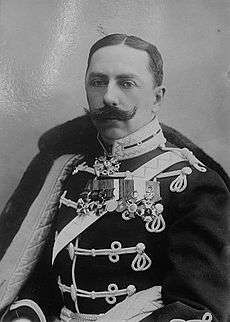
In 1910 the Vascongadas party tycoon, Tírso de Olázabal, first advised and then "almost forced" Oyarzun to visit the exiled Carlist king, Don Jaime, in his Frohsdorf residence.[39] The purpose quoted was to gather information for a booklet,[40] though it is also possible that following earlier resignations of Juan Vázquez de Mella and Antero Samaniego,[41] Don Jaime was looking for their successor as his personal secretary. Oyarzun spent some 2 months[42] with his king as unpaid "secretario interino"[43] and according to his own account they went together very well,[44] discussing even Don Jaime's matters of the heart.[45] His king offered Oyarzun the permanent job but he declined; the reason quoted was that already engaged with a fiancé, he was willing to marry.[46] The stay in Austria produced only[47] few correspondence pieces to Navarrese press, saluting Don Jaime as the king who "pregunta por su Patria, á la que no puede ver, como se pregunta la madre que vive lejos y que está en peligro de muerte".[48] Oyarzun's return to Navarre was hastened by news of Mondragón Carlists awaiting trial; Don Jaime asked Oyarzun to defend them in court, which he later did successfully.[49] However, at that point Oyarzun's political engagements were abruptly put on hold. In the 1910s he entered consular service and was assigned abroad, in the 1920s he dedicated himself to business and in the 1930s he resumed his foreign engagements; there is no information on his political or politics-related activities during the period until the mid-1930s.[50]
Professional intermezzo
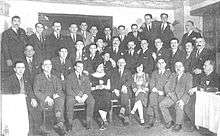
Advised by a friend, in the spring of 1911 Oyarzun decided to take public examinations for consular service and following brief period of intense learning,[51] he was successful.[52] Assuring his king that he was ready to abandon public duties any moment should the need to "conquistar el trono español" arise,[53] later that year he entered the Spanish consular corps[54] and in 1912 was already vice-consul in Liverpool,[55] holding the post also in 1913[56] and 1914.[57] Either in 1914 or in 1915 he was promoted[58] and assigned to Rio de Janeiro[59] as commercial attaché,[60] the post held until 1919, when he asked for leave.[61]
In 1919 Oyarzun returned to Spain to launch an own business, which from the onset assumed an impressive shape. He set up a company, named Alpha S.A., which dealt in import and sales of specialized machinery; it opened premises at prestigious locations in Madrid, but also in Barcelona, Valencia, Bilbao, Cadiz, Zaragoza and Vigo.[62] Initially the business covered a wide range of products for domestic use, office purposes,[63] food production[64] and agriculture, mostly small and mid-size tools though at times ranging up to tractors.[65] By the early 1920s the company operated already as Román Oyarzun y Cía. During few years its business model was formatted chiefly to trading in high quality, modern specialized electric kitchen appliances for home usage and dining industry, including dishwashers, mincers, band saw machines, mixers, spiral mixers, graters, peelers, coffee machines, blenders, immersion blenders, scales, roberval balances, blade grinders, wet grinders, cash registers, roasters, cutting machines, kelvinators and other cookingware.[66] Undoubtedly taking advantage of his experience as commercial attaché[67] and personal relations forged, Oyarzun developed the business dynamically;[68] openings of new premises were attended by personalities like US ambassador or president of Circulo Mercantil.[69] In 1928 he was already "opulento hombre de negocios"[70] with own car and own driver.[71] Another milestone step was made in 1932, when near Atocha he moved into a 14,000 square meters building, serving also as an assembly plant;[72] at that stage the company was active also in Portugal and Northern Africa.[73]
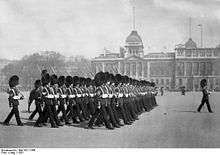
In parallel to already stable and prosperous business, in January 1931 Oyarzun applied for resumption of consular service and was admitted as agregado commercial de segunda clase.[74] Soon afterwards he was posted to London[75] as commercial attaché.[76] Duration of his service in England is not clear; some sources claim that Oyarzun served as a consul also in Nice, though no dates are given.[77] In particular, it is not known whether Oyarzun was still in London when in 1934 he was appointed to Vienna, promoted to first secretary of the Spanish legacy and accepting his already customary post of commercial attaché, territorially covering Austria, Hungary and Czechoslovakia.[78] He assumed the duties in early 1935.[79]
Late Carlist engagements
Prior to 1931 elections Oyarzun lamented Quema de conventos[80] and advocated an alliance of Catholic, monarchist, patriotic and regionalist forces.[81] Entrusted by Don Jaime with launching a Carlist daily, he failed due to financial issues[82] but launched an own Pamplona-based review, Tradición.[83] In the 1936 elections he ran as a Carlist candidate on a joint Candidatura Contrarrevolucionaria ticket in Madrid[84] and failed.[85] The July 1936 coup caught Oyarzun on a diplomatic mission in Vienna. Asked to sign a declaration of loyalty he refused, in his August 2 statement noting that such an act would violate his conscience, especially given the government was dominated "por elementos revolucionarios, comunistas y socialistas revolucionarios".[86] He then travelled to the Nationalist zone offering the Burgos junta his services,[87] only to find that in late September he would have to visit Vienna again: together with a group of top Carlist politicians he attended the funeral of his king Don Alfonso Carlos and in October he visited the new regent Don Javier in his Puchheim residence.[88]
In December 1936 Oyarzun published a press article titled Una idea: Requeté y Fascio; most authors claim it advanced an idea of a union between the Carlists and the Falangists,[89] though few maintain that it rather highlighted the differences.[90] Until some time in 1937 he believed in birth of a foral corporative regime,[91] yet also following the Unification Decree he remained entirely loyal to the emerging Francoist system and occasionally published pieces looking like a praise of Carlist identity within the new national conglomerate.[92] At that time he was already part of the new administration. In late 1936[93] Oyarzun was nominated Presidente del Comité Ejecutivo de Comercio Exterior,[94] a unit within the Francoist quasi-ministry of economy.[95] Its task was to control private foreign trade by means of licenses;[96] CECE operated until March 1938, when its duties were taken over by Comisión Reguladora.[97] It is not clear whether Oyarzun joined the body; he was rather noted for presence in other minor economy-related institutions.[98] In 1939 he resumed consular service, posted to Perpignan.[99] It is known that his assignment did not expire before 1944.[100]
_-_Fondo_Car-Kutxa_Fototeka.jpg)
In a 1945 text Oyarzun criticized Don Javier for protracting the regency and lamented bewilderment among the Carlists, yet he offered no solutions.[101] He refrained from taking an active stand and withdrew[102] into his Pamplona privacy,[103] limiting himself to the observer's role.[104] Over time he started to consider himself sort of an appendix to an extinguished idea, as he declared the Carlist dynasty finished and Carlism "reduced into debris and ashes".[105] Priding himself on cool matter-of-fact analysis, he considered the monarchist idea in decline[106] with the throne vacant and no appropriate candidate,[107] yet in 1965 he bothered to publish a work intended to counter the Juanista propaganda.[108] At least in terms of would-be monarchy he seemed entirely put up with the prospect of Franco's personal decision.[109] He did not engage in Francoist propaganda, yet by Traditionalists he was considered a Francoist and an ex-Carlist.[110]
Historian
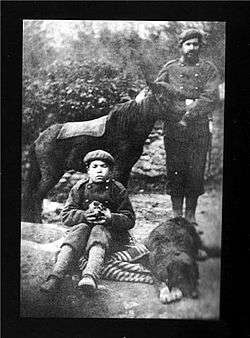
A trained historian,[111] until his late 50s Oyarzun did not try his hand in the field. The first incursion into the area was a 1935 translation from English, Campaña de doce meses en Navarra y las Provincias Vascongadas con el general Zumalacárregui.[112] During the Civil War he wrote Historia del Carlismo, first published in 1939, considered his opus magnum and re-published in 1944, 1954, 1965, 1969, 2008 and 2013. Vida de Ramón Cabrera y las guerras carlistas, a study on the Carlist commander from the First Carlist War, went into print in 1961, in 1964 followed by similarly formatted work focusing on a far less known military, El alavés D. Bruno de Villarreal, teniente general carlista. Pretendientes al trono de España (1965) was a political pamphlet rather than a historiographic work,[113] while Nacimiento, vida, muerte y resurrección de los sacerdotes obreros (1966)[114] appeared as a somewhat unexpected glossa to Vaticanum II, a discussion of socially minded French and Spanish priests of the early 20th century, the phenomenon Oyarzun witnessed[115] and sympathized with[116] himself.
The work which earned Oyarzun name in the Spanish historiography is his History of Carlism. Though historiographic and especially political literature on Carlism had already been massive, the only precedent work attempting an overall history of the movement was Historia de la guerra civil y de los partidos liberal y carlista by Antonio Pirala Criado. The study was first published in 1858 and prolonged systematically in following editions, the last one of 1906 covering the period up to the 1870s; it is usually considered a high-quality,[117] fairly non-partisan account.[118] Oyarzun's proposal, originally to be titled Compendio de Historia del Carlismo,[119] immediately replaced outdated Pirala's work as the first reference book on history of Carlism, the position it would occupy itself for the next half of a century. Once completed the author did not re-edit the work for further releases; except minor changes, the 1939 and the 1969 versions almost do not differ.[120]

Historia del Carlismo is structured in 33 chapters and covers the period from the 1830s to the 1930s. Its focus is clearly on military history, as the two Carlist wars are covered in 23 chapters; in comparison, the 60-year-long period after 1876 is treated in 4 chapters.[121] Belligerent threads aside Oyarzun is concerned primarily with politics, much attention dedicated also to personalities and some to the doctrine; social transformations and economic issues are generally treated marginally. Since the author ignores non-Carlist Traditionalism the book tends to emphasize the dynastic question as the backbone of Carlism, especially that with the death of Alfonso Carlos he considers the Carlist history to be over. Like most synthetic works Historia does not contain references to sources, which might be a problem given at times it is referenced as a source itself. Except the epilogue narration is generally far from zealous style, and represents a midpoint between somewhat bombastic Oyarzun's pieces from the 1900s and his embittered, skepticism-ridden writings from the 1960s.[122]
Reception and legacy
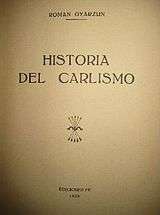
Already during the Republic days Oyarzun's translation was received rather well.[123] Later monographs on Cabrera and Villareal were acclaimed[124] and the former rewarded.[125] Historia del Carlismo was welcome by scholars[126] and the public alike as certified by numerous re-editions, especially that the narrative ended conveniently in 1936 and did not pose a challenge to the official Francoist propaganda. Until the 1990s it remained the key concise volume on Carlist history, with an alternative offered only by massive and detailed series of Melchor Ferrer, appearing between the early 1940s and the late 1970s.[127] As a primary source of scholarly reference Oyarzun's synthesis was replaced as late as in the late 20th century, by the 1990-1992 works of Clemente[128] and especially by the 2000 work of Canal.[129] Until today it remains a must-have bibliographic entry of every work dealing with the Carlist history until the Civil War; a 2008 PhD dissertation declared it "the main reference work"[130] and indeed another one of 2012 referred it 45 times.[131] Until recently, it was counted among " clásicas obras",[132] acknowledged as "una obra a un tiempo de corte clásico y moderno",[133] "obra clásica sobre la historia del carlismo",[134] "sintesis ya clásica"[135]
Since the late 20th century the general reception of Historia del Carlismo has changed. It is now typically placed within "Traditionalist historiography", which usually though not always[136] serves as a euphemism for bias and partiality.[137] Denied the credit of "objective or professional historiographic attention"[138] and "histoire critique",[139] the work is considered "„un breviario de partido",[140] "propaganda carlista",[141] "prosa partidista",[142] "very partisan",[143] "quite one sided",[144] "apologetic",[145] falling into the rubric of "narrative, uncritical, and often hagiographic",[146] "sin ningun distancia respecto al objeto de estudio"[147] and at times not only Traditionalist, but even "ultratradicionalista".[148] Some concede that among partisan authors, Oyarzun offers "nearest approximation",[149] "readable"[150] and "best one-volume narrative";[151] cases of referring Oyarzun without stigmatizing him first tend to be fairly rare.[152] In the recent history of Spanish historiography Oyarzun's work is spared a damning judgement as equipped with "una seña de identidad bibliográfica que reunía los requisitos mínimos para sobrepasar el radio de partidarios y simpatizantes".[153]
Within the Traditionalist camp Oyarzun was not spared criticism, up to the point of near-dismissal of the work altogether[154] and getting declared a heterodox.[155] His perceived pride in technocratic, no-nonsense "let’s get real" stand was deemed responsible for excessive and unfair challenge on allegedly spiritual and romantic nature of Carlism.[156] He was charged with dedicating too much attention to heterodoxes and secessions[157] and too little to some of the Carlist triumphant episodes.[158] Apart from customary charges related to bias, the other ones raised most often are insufficient source criticism,[159] overfocus on dynastic issues[160] and military history,[161] entanglement in juridical hair-splitting,[162] ignorance as to the social dimension,[163] downplaying religious issues,[164] failure to investigate the link to peripheral nationalisms,[165] factual errors,[166] reducing internal debates and secessions to personal squabbles,[167] unduly emphasis – bordering obsession[168] - on the Integrist thread[169] and rejection of menendezpelayista perspective of examining the cultural fabric.[170]
See also
Footnotes
- most sources claim he was born in 1882. There is one, however, which claims he was born in 1881, see Oyarzun Oyarzun Roman entry, [in:] Gran Enciclopedia Navarra, available here
- a certain Juan Miguel Oyarzun, recorded in Olagüe in 1809, was illiterate, Jesús Aldaba, El juramento de 1809: fuente para el estudio de alfabetización en Navarre y Gipuzkoa, [in:] Antzina 6 (2011), p. 13
- El Eco de Navarra 07.03.08, available here
- compare account of him getting trapped with his mules in snow-covered mountains and getting rescued by Guardia Civil, El Aralar 16.01.95, available here
- Román Oyarzun, Pretendientes al trono de España, Madrid 1965, p. 83. Upon death he was noted as "persona muy apreciada en Navarra", El Eco de Navarra 04.03.08, available here
- El Eco de Navarra 07.03.08, available here
- El Siglo Futuro 07.02.90, available here
- for "el estiudante"
- El Siglo Futuro 06.02.36, available here
- El Eco de Navarra 10.06.02, available here, El Eco de Navarra 11.06.02, available here
- El Siglo Futuro 06.02.36, available here
- the faculty of Philosophy and letters was divided into 3 sections: philosophy, literature and history, Oyarzun 1965, p. 82
- Suplemento á escuela moderna 22.05.06, available here
- José Navarro Cabanes, Apuntes bibliográficos de la prensa carlista, Valencia 1917, p. 219
- ABC 14.03.79, available here, El Eco de Navarra 19.07.11, available here
- apart that they probably lived in the Gipuzkoan Lezo, which might suggest that Oyarzun met his fiance when serving in San Sebastian as editor of El Correo, La Correspondencia de España 19.11.19, available here
- El Eco de Navarra 19.12.11, available here, ABC 06.02.69, available here
- El Eco de Navarra 04.07.11, available here
- Javier Oyarzun Iñarra entry, [in:] Geneallnet service, available here
- Julio Aróstegui, Combatientes Requetés en la Guerra Civil española, 1936-1939, Madrid 2013, ISBN 9788499709758, p. 511
- Román Oyarzun Iñarra entry, [in:] Auñamendi Eusko Entziklopedia, available here
- La Vanguardia 23.12.72, available here
- in his memorandum of 1961 Román Oyarzun Iñarra discussed optional strategies to be adopted by Spain towards the European Economic Community and advocated neither in or out, but a status of an associate, Heidy Cristina Senante Berendes, La política europea de Franco: la indefinición ante Europa, [in:] Pilar Sánchez Castro, Carlos Flores Varela, Manuel M. Martín Galán. Riansares Serrano Morales (eds.), El franquismo: el régimen y la oposición, Guadalajara 2000, ISBN 8493165808, p. 132
- ABC 29.09.13, available here
- compare Javier Oyarzun Iñarra, Expediciones españolas al estrecho de Magallanes y Tierra del Fuego, Madrid 1976
- Ainhoa Arozamena Ayala, María Oyarzun Iñarra, [in:] Auñamendi Eusko Entziklopedia, available here
- Roman Oyarzun Marchesi entry, [in:] Portal de Transparencia service of the Spanish government, available here
- El Siglo Futuro 07.02.90, available here
- El tradicionalista 06.08.05, available here
- El Correo Español 03.08.06, available here
- El Eco de Navarra 03.12.08, available here
- B. de Artagan [Reynaldo Brea], Príncipe heróico y soldados leales, Barcelona 1912 , p. 187. The daily was launched in 1898, José Varela Ortega, El poder de la influencia: geografía del caciquismo en España: (1875-1923), Madrid 2001, ISBN 8425911524, p. 462
- Navarro Cabanes 1917, p. 219
- Oyarzun 1965, p. 80
- España y América 01.07.08, available here
- one of the jury members told later Oyarzun: "Después del discurso del fiscal, que ha sido tremendo, todos los del jurado estábamos decididos a condenarle a usted, pero cuando usted contestó con tanto brío, con tanta sinceridad y con tanta fuerza persuasiva, hemos decidido votar por la absolución", Oyarzun 1965, p. 80
- Oyarzun 1965, p. 80, El tradicionalista 20.02.09, available here
- following the death of his father he had to take care of the family business, which boiled down to closing "varios negocios", Oyarzun 1965, p. 83
- Oyarzun 19656, p. 83
- El Norte 13.09.10, available here
- Juan Vázquez de Mella served in 1909-1910; Antero Samaniego y Martínez Fortún was nominated in May 1910, Agustín Fernández Escudero, El marqués de Cerralbo (1845-1922): biografía politica [PhD thesis Complutense], Madrid 2012, p. 424
- Oyarzun 1965, p. 90. According to the press notes Oyarzun left Pamplona for Frohsdorf on September 13, 1910; and on December 9, 1910 he was already back in San Sebastián, compare El Eco de Navarra 09.12.10, available here
- El Norte 27.09.10, available here
- having spent with Don Jaime "una larga temporada", Oyarzun 1965, p. 90
- according to Oyarzun at that time Don Jaime was strongly attracted to a very young Borbón-Parma princess; instead, Oyarzun advised him to focus rather on her older sister Zita, later to marry to the Austrian heir Karl Habsburg, Oyarzun 1965, p. 84. The anonymous "young princess" could have been only Maria Antonia, born 1895; she has never married and became a Benedictine nun
- Oyarzun 1965, p. 84
- in terms of political importance Ouyarzun’s stay in Frohsdorf seems irrelevant. The work which deals in detail with the Carlist history of the period in question, and specifically discusses growing hostility between Don Jaime and de Mella, does not mention Oyarzun a single time, compare Juan Ramón de Andrés Martín, El cisma mellista. Historia de una ambición política, Madrid 2000, ISBN 9788487863820
- "un R... que trabaja por España, que escribe á España para preguntar por ella, que pregunta por su Patria, á la que no puede ver, como se pregunta la madre que vive lejos y que está en peligro de muerte", El Correo Español 28.09.10, available here
- Oyarzun 1965, pp. 84-85
- Oyarzun prided himself on doing one thing at a time. In 1944 he wrote: "En cada época de mi vida me he dedicado a lina, gola actividad (creo que con marcada y por todos reconocido éxito), entregando a ella todo mi ser, acaso con excesivo ardor y entusiasmo. Mientras estuve en el periodismo, fui sólo periodista; mientras estuve en la carrera consular o diplomática, fui sólo cónsul o diplomático; mientras estuve en los negocios (excedente voluntario en el escalafón), fui simple hombre de negocios", Román Oyarzun, Historia del Carlismo, Madrid 1944, p. 500 [section unavailable in earlier or later editions]
- Oyarzun 1965, p. 85
- El Eco de Navarra 14.05.11, available here
- Oyarzun 1965, p. 85
- El Correo Español 01.04.11, available here; at that time consular service did not count as diplomacy, Oyarzun 1965, p. 85
- El Eco de Navarra 11.04.12, available here
- Guía Oficial de España 1913, p. 151, available here
- Guía Oficial de España 1914, p. 151, available here
- as consul of 2nd class, Guía Oficial de España 1916, p. 148, available here
- El Correo Español 07.04.15, available here
- Diario de Valencia 07.03.16, available here
- Panorama 23.10.27, available here
- El Sol 11.12.19, available here
- like mimeographs, La Voz 06.04.22, available here
- especially wine and olive production, ABC 29.05.21, available here
- Heraldo de Madrid 21.05.21, available here
- Diario de Córdoba 06.05.27, available here
- Oyarzun became quite competent in issues relate to foreign trade, compare e.g. his 1921 article, discussing the Spanish tariff table, El Debate 10.06.21, available here
- ABC 12.07.22, available here
- Diario de Córdoba 06.05.27, available here
- El Día 01.02.28, available here
- La Libertad 20.10.28, available here
- the outlet was dubbed "orgullo del comercio español", La Libertad 16.02.32, available here
- ABC 12.07.22, available here
- La Epoca 01.01.31, available here
- La Libertad 01.10.31, available here
- La Libertad 16.02.32, available here
- Ainhoa Arozamena Ayala, Román Oyarzun Oyarzun entry, [in:] Auñamendi Eusko Entziklopedia, available here
- ABC 07.04.35, available here
- "byl přidělen na misto odvolaného don Vicente Taberna y Latasa velvyslanecký tajemník don Roman Oyirma y Oyarzun jako obchodní ataché", Lídove Noviny 01.02.35, available here
- he denounced the scenes seen in Seville and Cordona as "escenas bochornosas y repugnantes", dubbing Madrid "capital del vandalismo", Víctor Manuel Arbeloa, Navarra y los estatutos de autonomía, 1931-1932, Madrid 2015, ISBN 9788416549177, p. 87
- Arbeloa 2015, p. 87
- in May 1931. First-hand account in Oyarzun 1944, pp. 456-457, also Ainhoa Arozamena Ayala, Román Oyarzun Oyarzun entry, [in:] Auñamendi Eusko Entziklopedia, available here. The nationwide daily materialised soon as El Siglo Futuro, brought in by the Integrists upon their unification within Comunión Tradicionalista
- Ignacio Romero Raizabal, El prisionero de Dachau 156.270, Santander 1972, p. 127
- ABC 05.02.36, available here
- most Right-wing candidates gathered similar number of votes, though Oyarzun he was among the least fortunate, for full results in Madrid see La Nación 18.02.36, available here
- the full text reads: "Contestando pregunta telegráfica Vuecencia de que me da traslado escelentísimo señor Ministro de España en Viena, obligándome a hacer una declaración política contra lo prescrito artículo cuarenta y uno Constitución vigente y haciendo uso derecho hallarme en desacuerdo con política seguida por Gobierno actual, cada día más influido y dominado por elementos revolucionarios, comunistas y socialistas revolucionarios, a quienes considereo enemigos de Religión, Patria y Libertad. Prefiero perder puesto mediante oposición y con garantía inamobilidad a violentarmi conciencia", Labór 13.08.36, available here
- Labór 13.08.36
- [Ignacio Romero Raizábal], Boinas rojas en Austria: reportaje sentimental, Burgos 1936, pp. 50, 120, 131, 160-163. The account contains some picturesque episodes, e.g. the group navigating across Vienna trying to find the Danube. It also seems to suggest that Oyarzun, never a distinguished party member, enjoyed prestigious position among key Carlist politicians, e.g. he made sure that Berasain did not go off limits when taking voice. During the entire trip Oyarzun was accompanied by his son, also Roman Oyarzun, who partially served as a driver
- this is the view advanced in Mercedes Peñalba Sotorrío, Entre la boina roja y la camisa azul, Estella 2013, ISBN 9788423533657, pp. 23, 118, Martin Blinkhorn, Carlism and Crisis in Spain, Cambridge 1975 [re-printed with no re-edition in 2008], ISBN 9780521086349, pp. 281-281, Stanley G. Payne, Fascism in Spain, 1923–1977, Madison 1999, ISBN 9780299165642, pp. 260-261, Maximiliano Garcia Venero, Historia de la Unificacion, Madrid 1970, p. 80. The article was published on December 19 in El Pensamiento Navarro. He claimed that differences between both organizations were secondary (red/black colours, "comrade" way of addressing, uniforms), but also that, "both forces are rooted in the people; both nourish their ranks from the masses; in neither of them do great plutocratic interests hold privileged status or positions of command... Both forces are believers and put their trust in God". His article is at times viewed as "probablemente la primera manifestación de una posibilidad unificadora concertada por mutuo acuerdo de las dos organizaciones"
- the opinion advanced in Juan Carlos Peñas Bernaldo de Quirós, El Carlismo, la República y la Guerra Civil (1936-1937). De la conspiración a la unificación, Madrid 1996, ISBN 9788487863523, p. 246. The author highlights differences as pointed out in the article: Falange and fascism are foreign imports, the fascist idea is socially indebted to sindicalism and the ugetistas, for the Falangists Carlism is a reactionary and archaic force, hence unity between the two is not possible. On the other hand, what seems more promising was that CEDA and Renovacion Española were approaching Carlism
- Xosé-M. Núñez-Seixas, La región y lo local en el primer franquismo, [in:] Stéphane Michonneau, Xosé-M. Núñez-Seixas (eds.), Imaginarios y representaciones de España durante el franquismo, Madrid 2014, ISBN 9788415636656, p. 135: "hasta mediados de 1937, algunos carlistas — como el periodista, político e historiador Román Oyarzun o el conde de Rodezno — todavía creían que la «nueva Espańa» se basaría sobre las autarquías regionales y alguna forma de descentralización basada en el sufragio corporativo, que se retrotraía a las libertades forales de las que Navarra era santo y seńa"
- and against "internacionalismo judaico marxista". The piece contained venerating references to Franco, hailing thousands of requeté who fell "luchando a las órdenes de nestro glorioso y querido Caudillo Franco, por el triple lema de su bandera, por Dios, por la Patria y Rey", Pensamiento alaves 22.02.38, available here
- CECE was created on November 30, 1936. Pablo Martín Aceña, La economía de la guerra civil, Madrid 2006, ISBN 9788496467330, p. 299
- Oyarzun 1965, p. 89
- at that time the quasi-ministry operated as Comisión de Industria, Comercio y Abastos. It might not be irrelevant that it was headed by another Carlist, Joaquín Bau, Joaquín Monserrat Cavaller, Joaquín Bau Nolla y la restauración de la Monarquía, Madrid 2001, ISBN 8487863949, pp. 123-124
- in fact it dealt with central trading operations related to the military; licenses and regulations were initially handled by provincial authorities, Aceña 2006, p. 300
- José Angel Sánchez Asiaín, Economía y finanzas en la guerra civil española, Madrid 2012, ISBN 9788498920468, p. 70
- in 1937 Oyarzun was noted as Presidente of Comité Sindical de Fertilizantes, another body working under Junta Técnica de Estado and heavily related to producing explosives, Boletin Oficial de la Provincia de Soría 24.11.37, available here
- Joseph M. Bayo, Francis Xavier Connolly, Spain, vol. 4, New York 1939, p. 51
- L’Action francaise 10.08.43, available here; in 1944 he was promoted to ministro plenipotenciario, La Vanguardia 08.02.44, available here
- "Llevamos más de nueve años sin designar pretendiente. ¿Es que el plazo no ha sido más que suficiente? Pero, lo que es aún más grave, la desorientación que reina en las altas esferas sobre quién deba serlo y, sobre todo. Cómo hay que proclamarlo, es aterradora. Ello encierra una gran responsabilidad para el regente y para su delegado, quienes, en conciencia, no pueden seguir inhibiéndose, como lo han hecho hasta ahora, ante la necesidad urgente, urgentísima, de dar una solución al problema que es capital dentro del partido." also "Esta demora inexplicable e injustificada en la proclamación de pretendiente o rey ha traído como consecuencia una gran confusión y desasosiego en las filas carlistas y una floración de candidatos para todos los gustos y para no pocas ambiciones", Oyarzun 1965, pp. 103-104
- rarely giving lectures, e.g. in the Barcelona Ateneo on Cabrera, La Vanguardua 27.11.55, available here
- he later claimed that in case of dissent with the main party line, he preferred to withdraw to the back row and stay silent instead of fuelling dissidency, Oyarzun 1965, p. 9
- "Yo, desde hace largo tiempo, no ambiciono nada en política. Me limito a ser mero observador y, a ratos, historiador", Oyarzun 1965, p. 13
- "Yo no soy auténtico [Carlist] ni mucho menos [than Rodezno and the like], y, si me apuráis, diré que dudo de que sea un carlista ortodoxo (para los de mentalidad anquilosada, soy demasiado avanzado en ciertas disciplinas políticas y lo fui siempre), pero jamás he pensado en erigirme en representante del antiguo y glorioso partido, convertido hoy en escombros y cenizas, por culpa de unos y de otros de los que le han dirigido en las últimas décadas o lustros", Oyarzun 1965, p. 90
- "en nuestra modesta opinión, ninguno reúne las dos legitimidades, la de origen y la de ejercicio, que exigen ahora los tratadistas, tanto de la rama carlista como los del Movimiento", also "El trono español está vacante: se diría que es res nullius, en espera de que se apropie de él o se siente en él aquel que tenga más arrestos para conquistarlo, o más altos apoyos para coronarse como rey. Pero seguimos pensando que las perspectivas no son muy halagüeñas para los monárquicos españoles", Oyarzun 1965, pp. 113-114
- Oyarzun dismissed Don Juan as descendant of Francisco de Paula, considered illegitimate son of Godoy and de-legimised by the Cádiz cortes already. He considered dynastic rights of Don Javier at least "highly dubious" and those of the octavista claimants, starting with Don Carlos Pío, made up. Full lecture in Oyarzun 1965
- the early 1960s was the period when the Alfonsist prince Juan Carlos and the Carlist one Carlos Hugo seemed very close when racing to the throne. In 1964 Francisco Melgar published El noble final de la escisión dinástica, the work which advanced the cause of the former by claiming that Don Juan, the father of Juan Carlos, was the legitimate Carlist heir. Immediately afterwards Oyarzun commenced work on his Pretendientes, completed in January 1965. On its 125 pages Melgar is omnipresent as a counterpoint of reference, noted 38 times, his concepts and suggestions systematically repudiated and ridiculed. Oyarzun often referred to his 2-month period with Don Jaime to dismiss some of Melgar’s claims, compare Oyarzun 1965, p. 86-7. However, Oyarzun firmly dismissed also the claims of Carlos Hugo and somewhat less firmly those of his father, Don Javier
- the work ends with the chapter dedicated to Franco’s decree of March 31, 1947. When discussing it, Oyarzun claims that any pretender was doomed "si el régimen que acaudillo Francisco Franco Bahamonde no le abre el camino y le marca la ruta que ha de seguir para conseguir ser coronado", Oyarzun 1965, p. 116
- a 1965 statement of a Carlist network named Junta de defensa read that "Sr. Oyarzun, que además de diplomático al servicio del régimen imperante, es franquista, con lo cual ha dejado de ser carlista", César Alcalá, D. Mauricio de Sivatte. Una biografía política (1901-1980), Barcelona 2001, ISBN 8493109797, p. 171. Also in 1965 a Carlist activist targeted Oyarzun with the remark that "la gran mayoría de los del 18 de julio, nos hemos casado, y nuestros hijos siguen engrosando, y a mucha honra, las filas de la Comunión Carlista", Francisco Javier Caspistegui Gorasurreta, Entre la ideología y lo cotidiano: la familia en el carlismo y el tradicionalismo (1940-1975), [in:] Vasconia: cuadernos de historia-geografía 28 (1999),p. 52. By some historians he is considered a "unificated" Carlist, Antonio Morales Moya, Ideologías y Movimientos Políticos, vol. 4, Madrid 2001, ISBN 9788495486257, p. 89
- since his curriculum at law and letters included history, Oyarzun 1965, p. 82
- Roman Oyarzun, Campaña de doce meses en Navarra y las Provincias Vascongadas con el general Zumalacarregui, Madrid 1935, a translation of Charles Frederick Henningsen, The Most Striking Events of a Twelvemonth’s Campaign with Zumalacarregui in Navarre and the Basque Provinces, London 1836
- "aparecida en el marco de polémica sobre la sucesión del general Franco entre juanistas, octavistas y javieristas", José Ramón Barreiro Fernández, O liberalismo nos seus contextos: un estado da cuestión, Santiago de Compostela 2008, ISBN 9788497509190, p. 38
- Román Oyarzun, Nacimiento, vida, muerte y resurección de los sacerdotes obreros, Madrid 1966
- the first part of the work was an historical account from France of the early 20th century, the second was polemics with Michel de Saint Pierre, Los nuevos curas, Madrid 1965, all related to the person of Georges Michonneau. Oyarzun distinguished between two antecedents of worker-priests and dismissed the Integrist one, speaking in favor of "una Iglesia abierta al mundo", Francisco Javier Caspistegui Gorasurreta, El naufragio de las ortodoxias. El carlismo, 1962–1977, Pamplona 1997; ISBN 9788431315641, p. 103
- compare Oyarzun’s 1906 address, El Correo Español 03.08.06, available here
- José Ramón Urquijo Goitia, Fueros, lengua y política. La historia como instrumento de lucha política en el País Vasco actual, [in:] Hispania. Revista Española de Historia LXIX/232 (2009), p. 522
- Begoña Urigüen, Orígenes y evolución de la derecha española: el neo-catolicismo, Madrid 1986, ISBN 9788400061579, p. 46. For an earlier and different view, charging Pirala with a Liberal bias, see ABC 18.08.39, available here
- Oyarzun 1944, p. 495
- the 1944 edition contained few bibliographical improvements compared to the 1939 one. It also contained a new section titled Autocrítica y crítica de los críticos, dropped in subsequent editions
- Oyarzun was perfectly aware of the segmentation and kept defending it: "dedico 425 páginas a las guerras y 175 a la lucha legal o pacífica, y no llegan a 12 las que tratan de las escisiones integrista y mellista. Cualquier lector libre de prejuicios convendrá conmigo en que la proporción es justa", Oyarzun 1944, p. 503, also El Correo Catalan 14.03.40. In Oyarzun's Historia, account of both wars constitutes some 75% of the volume; for Canal 2000 (adjusted to cover the period up to 1936 only) the figure is 31%
- compare his style of 1906, El Correo Español 28.09.10, available here, and this of Pretendientes, published in 1966
- ABC 07.04.35, available here
- ABC 03.12.61, available here
- ABC 03.12.61, available here
- ABC 18.08.39, available here, La Vanguardia 11.02.40, available here
- Melchor Ferrer, Historia del tradicionalismo español, vols. 1-30, Seville 1941-1979
- first was a sketchy booklet by Josep Carles Clemente, El Carlismo: historia de una disidencia social (1833-1976), Madrid 1990, ISBN 9788434410923, followed by a more thorough Historia general del carlismo, Madrid 1992, ISBN 9788460446217
- Jordi Canal, El carlismo, Madrid 2000, ISBN 8420639478
- "amely a mai napig a carlismo történetével foglalkozó szerzők legfontosabb referenciaműve", Edina Polácska, Karlista emigráció Franciaországban (1872–1876) [PhD dissertation University of Szeged], Szeged 2008, p. 10
- see Fernández Escudero 2012
- Eloy Fernández Clemente, Aragón contemporáneo: 1833-1936, Zaragoza 1975, ISBN 9788432302053, p. 132
- also "muy veraz y equilibrado, de amplia información, de excelente desarrollo narrativo y claro juicio", ABC 26.07.69, available here
- Historia del Carlismo de Román Oyarzun, [in:] Religión en Libertad service 14.05.10, available here
- Enrique F. Area Sacristán, La incidiencia de los Nacionalismos excluyentes en la Profesionalización de las Fuerzas Armadas [PhD thesis Salamanca], Salamanca 2009, p. 297.
- for exceptions compare e.g. "historiador carlista que conocía profundamente el alma del tradicionalismo", Ramón María Rodón Guinjoan, Invierno, primavera y otoño del carlismo (1939-1976) [PhD thesis Universitat Abat Oliba CEU], Barcelona 2015, pp. 54-55, "[Oyarzun belongs] do czołówki historyków karlistowskich", Jacek Bartyzel, Nic bez Boga, nic wbrew tradycji, Radzymin 2015, ISBN 9788360748732, pp. 18, 176
- the classic case is Canal 2000, p. 26; the author presents Oyarzun as "en su vertiente tradicionalista". He groups works on Carlism into "traditionalist", "neo-traditionalist", "neo-Carlist" and "scholarly" rubrics, placing his own writings in the last one, pp. 402-426
- Raymond Grew (ed.), Crises of Political Development in Europe and the United States, Princeton 1979, ISBN 9780691630823, p. 217
- Pierre Villar, Histoire contemporaine de l’Espagne, [in:] Revue historique 75 (1951), p. 303
- Urquijo Goitia 2009, p. 522
- Daniel Rivadulla Barrientos, Jesús Raúl Navarro García, María Teresa Berruezo, El exilio español en América en el siglo XIX, Madrid 1992, ISBN 9788471004925, p. 405
- José Carlos Clemente, Carlos Hugo de Borbón Parma: Historia de una Disidencia, Madrid 2001, ISBN 9788408040132, p. 23
- Alice L. Lascelles, J.M. Alberich (eds.), Sir Vincent Kennett-Barrington. Letters from the Carlist War (1874-1876), Exeter 1987, ISBN 9780859892643, p. VI
- Hans Rogger, Eugen Weber, The European Right: A Historical Profile, Princeton 1965, p. 206
- Urigüen 1986, p. 46
- Stanley G. Payne, Basque Nationalism, Reno 1975, ISBN 9780874170429, p. 57
- Canal 2000, p. 26
- Jiří Chalupa, Jordi Canal, El carlismo [review], [in:] Acta Universitatis Palackianae Olomucensis. Philologica, Olomouc 2007, p. 299
- Rogger, Weber 1965, p. 206
- Lascelles, Alberich 1987, p. VI
- Payne 1975, p. 57
- see e.g. a reference to Historia among "general works that deal in whole or in part with the monarchist ultra-right", Walter Laqueur (ed.), Fascism. A Reader's Guide: Analyses, Interpretations, Bibliography, Princeton 1978, ISBN 9780520036420, p. 295
- José Manuel Cuenca Toribio, La historiografía española sobre la edad contemporánea, [in:] José Andrés-Gallego (ed.), Historia de la historiografía española: Nueva edición revisada y aumentada, Madrid 2004, ISBN 9788474907094, p. 202
- Lopezarra [Francisco López Sanz] following a spate of criticism concluded that at least Oyarzun "made an effort and his intention was good", quoted after Oyarzun 1944, p. 502
- compare his polemics with Traditionalist critics in the section Autocrítica y crítica de los críticos, Oyarzun 1944
- Miguel Fagoaga, Román Oyarzun, Historia del Carlismo [review], [in:] Revista de estudios políticos 176-177 (1971), p. 216. Another scholar writes about "la prosa pomposa, romántica y partidista de Oyarzun", Clemente 2001, p. 23
- Oyarzun 1944, pp. 496-7, also El Correo Catalan 05.03.40
- see e.g. comments published in La Voz de España and dealth with in Oyarzun 1944, p. 502
- Urigüen 1986, p. 46
- ABC 18.08.39, available here
- Oyarzun 1944, p. 503
- "les derniéres pages peignent la désorientation d’un carlisme qui devrait, pour demeurer fidéle a la légitimité, se rallier aux Alphonsiens détestés, ou, pour chercher d’autres candidats, remonter des ascendances exclusivement féminines, ou accepter „le plus digne” – ce qui par précisément „juridique”: c’est ingénu, et presque comique", Villar 1951, p. 304
- "R. Oyarzun s’est interdit d’en étudier l’aspect sociologique", Villar 1951, p. 304
- Villar 1951, p. 304, Fagoaga 1971, pp. 212-217
- "Il passe sous silence une contradiction plus moderne et plus brulante: le passage en bloc de milieux jadis carlistes – paysans catalans y basques – á un „nationalisme” républicain et progressiste", Villar 1951, pp. 304
- see e.g. comments on origin of the "Viva Cristo Rey" war-cry, Oyarzun 1944, p. 501 and other, p. 502, also El Correo Catalan 14.03.40
- Jordi Canal i Morell, El carlisme catala dins l'Espanya de la restauracio: un assaig de modernització politica (1888-1900), Barcelona 1998, ISBN 9788476022436, p. 68
- see criticism of Eladio Esparza in Oyarzun 1944, pp. 498-499.
- Fagoaga 1971, pp. 212-217
- Pedro Rújula, Acerca de la especificidad del carlismo, [in:] Géronimo de Uztariz 9/10 (1994), p. 124
Further reading
- Jordi Canal, Epilogo: Carlistas, historiadores e historia del carlismo, [in:] Jordi Canal, El Carlismo, Madrid 2000, ISBN 8420639478, pp. 402–436
- María Oyarzun Iñarra, Román Oyarzun Iñarra, Personalidad de Navarra, Pamplona 1989, ISBN 9788440444042
External links
- Historia del Carlismo online
- Campaña de doce meses en Navarra y las Provincias Vascongadas con el general Zumalacárregui online
- Roman Oyarzun Marchesi by Spanish Foreign Office
- Oyarzun at Aunamendi Eusko Entziklopedia
- Oyarzun at Gran Enciclopedia Navarra
- Vizcainos! Por Dios y por España; contemporary Carlist propaganda
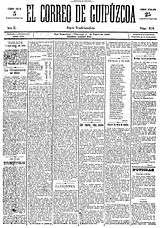
_-_Fondo_Mar%C3%ADn-Kutxa_Fototeka.jpg)